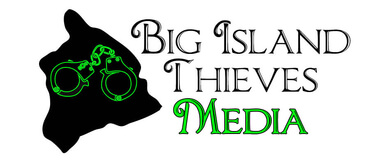Introduction
Financial literacy, or financial capability as it is currently defined at the federal level, is the capacity, based on knowledge, skills and access, to manage financial resources effectively. To develop this capacity, individuals must have appropriate access to and understanding of financial products, services, and concepts. Financial literacy empowers individuals to make informed choices, avoid pitfalls, know where to go for help, and take actions to improve their present and long-term financial well-being.
The Hawaii State Department of Education, Office of Curriculum and Instructional Design, is currently investigating ways to ensure every student receives basic financial literacy before high school graduation. At this time, efforts are focused on financial literacy education at the high school level.
As part of this work, draft content standards have been curated for a one-semester introductory level high school course on financial literacy designed to help students develop the capacity to describe, analyze, and evaluate many financial topics that most students will directly experience in their personal and professional lives. While a one-semester course is not the only way in which financial literacy education can be provided to students, the standards are a vital step toward ensuring consistent financial literacy education across the state.

The content standards are derived from the 2017 edition of the National Standards in K-12 Personal Finance Education (pdf, pictured to the right) from the Jump$tart Coalition. These standards are consistent with both state- and nationally-recognized concepts that are important to healthy financial literacy.
The themes are aligned to the six major categories utilized in Jump$tartʻs National Standards: 1) Spending and Saving; 2) Credit and Debt; 3) Employment and Income; 4) Investing; 5) Risk Management and Insurance; and 6) Financial Decision Making.
The sample teacher guidance is a list of skills gleaned from Jump$tartʻs benchmarks which describes what teachers may ask students to demonstrate in order to meet each content standard. The guidance is not intended to serve as an all-inclusive list; rather, the guidance serves as a sample set of statements for teachers to consider how to best help their students meet the content standards.
Special thanks to Kelly Lee, founder of the Hawaii Coalition of Jump$tart, for lending her content area expertise to this effort.
| THEME 1: Spending and Saving | |
| Content Standard
The student shall: | Sample Teacher Guidance
To help students meet the Content Standard, the teacher may ask students to: |
| Content Standard MD.PFL.1.1
Develop a plan for spending and saving. |
|
| Content Standard MD.PFL.1.2
Describe how to use different payment methods. |
|
|
THEME 2: Credit and Debt
| |
|
Content Standard
The student shall:
| Sample Teacher Guidance
To help students meet the Content Standard, the teacher may ask students to: |
| Content Standard MD.PFL.2.1
Analyze the costs and benefits of various types of credit. |
|
| Content Standard MD.PFL.2.2
Summarize a borrower’s rights and responsibilities related to credit reports. |
|
| THEME 3: Employment and Income | |
|
Content Standard
The student shall:
| Sample Teacher Guidance
To help students meet the Content Standard, the teacher may ask students to: |
| Content Standard MD.PFL.3.1
Explore job and career options. |
|
| Content Standard MD.PFL.3.2
Compare sources of personal income and compensation. |
|
| THEME 4: Investing | |
|
Content Standard
The student shall:
| Sample Teacher Guidance
To help students meet the Content Standard, the teacher may ask students to: |
| Content Standard MD.PFL.4.1
Explain how investing may build wealth and help meet financial goals. | ● Describe reasons for investing.
● Devise an investment plan for accumulating money for a major expense such as a college education or the down payment on a car. ● Describe the importance of various sources of income in retirement, including Social Security, employer-sponsored retirement savings plans and personal investments. |
| Content Standard MD.PFL.4.2
Evaluate investment alternatives. | ● Explain the difference between stocks and bonds.
● Give examples of investments for current income and investments for future growth. ● Compare the advantages of taxable, tax-deferred and tax-advantaged investments for new savers, including Roth IRAs and employer-sponsored retirement vehicles. |
| THEME 5: Risk Management and Insurance | |
|
Content Standard
The student shall:
| Sample Teacher Guidance
To help students meet the Content Standard, the teacher may ask students to: |
| Content Standard MD.PFL.5.1
Identify common types of risks and basic risk management methods. |
|
| Content Standard MD.PFL.5.2
Justify reasons to use health, disability, long-term and life insurance. |
|
| THEME 6: Financial Decision Making | |
|
Content Standard
The student shall:
| Sample Teacher Guidance
To help students meet the Content Standard, the teacher may ask students to: |
| Content Standard MD.PFL.6.1
Recognize the responsibilities associated with personal financial decisions. |
|
| Content Standard MD.PFL.6.2
Make criterion-based financial decisions by systematically considering alternatives and consequences. |
|



